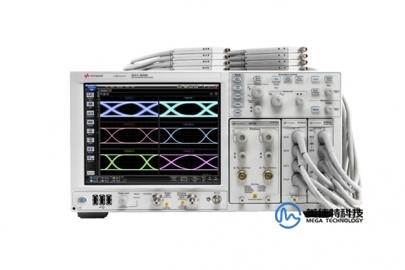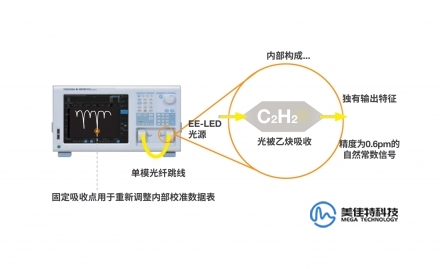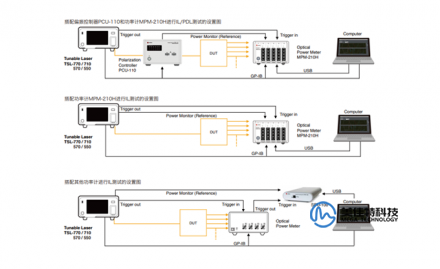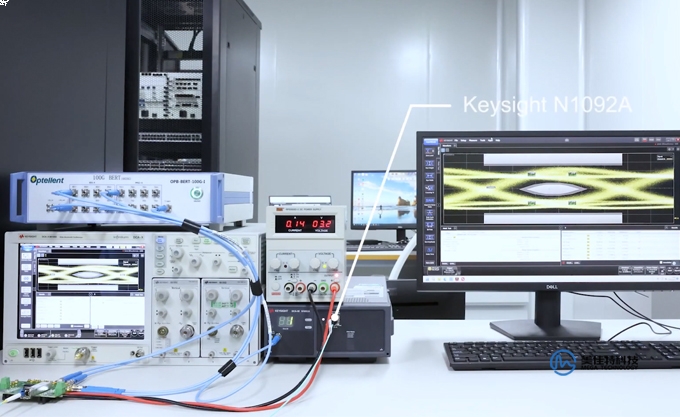FQA
2024.11.15
FQA
What is the difference between SR, LR, LRM, ER and ZR in 10G optical modules?
2024.07.09
SR, LR, LRM, ER and ZR are the more common module types in the 10GIEEE standard, but what is the difference between 10g SR, LR, LRM, ER and ZR? First we need to know what they represent. In fiber optic communication, SR, LR, LRM, ER and ZR are a kind of distance terminology in 10G optical module transmission, SR means short distance, LR means long distance, LRM means length extended multipoint mode, ER means ultra-long distance, and ZR means the longest distance.




FQA

16
2024-01
How to choose an eye diagram template for keysight FlexDCA software? keysight FlexDCA Software
FlexDCA software runs on the YesTech Digital Communications Analyzer (DCA) family of sampling oscilloscopes (also known as equivalent time oscilloscopes). DCA can help you display and analyze the analog properties of high-speed signals, such as those used in wireline communications and data center links.FlexDCA is installed by the manufacturer on the DCA-X mainframe, or it can be installed on a computer to control the DCA-M or remotely control the DCA-X.
FQA

16
2024-01
86100D How to Communicate Using a Computer Keysight DCA-X Oscilloscopes
This paper proposes a simple solution for the 86100D DCA-X oscilloscope communication, the main ways of communication are: LAN connection, GPIB connection, the 86100D DCA-X oscilloscope combines high analog bandwidth, low jitter and low noise performance, and is able to accurately characterize optical and electrical designs ranging from 50Mb/s to 40Gb/s (and above).
FQA

12
2024-01
What is the difference between DWDM and CWDM? What are the advantages and disadvantages?
DWDM and CWDM are two optical wavelength division multiplexing technologies that multiplex multiple optical signals of different wavelengths into a single optical fiber for transmission, improving fiber utilization and transmission capacity.
FQA

12
2024-01
What is XGS-PON and how does XGS-PON coexist with GPON and XG-PON?
XGS-PON is a symmetric 10G PON technology, which is the technical evolution of GPON and XG-PON.XGS-PON can share the same optical distribution network (ODN) with GPON and XG-PON, and supports the mixed access of three types of ONUs.XGS-PON's coexistence scheme mainly relies on the Combo Optical Module and the wavelength division multiplexing (WDM) technology to realize the separation and multiplexing of optical signals of different wavelengths and rates. The XGS-PON coexistence solution mainly relies on Combo Optical Module and Wavelength Division Multiplexing (WDM) technology, which realizes separation and multiplexing of optical signals of different wavelengths and rates.
FQA

12
2024-01
What is an optical module and what is the difference between SFP, SFP+ and XFP optical modules?
Optical module is an optoelectronic device used to realize the conversion between optical and electrical signals. The main components of an optical module are optical transmitters, optical receivers, functional circuits and optical interfaces, etc. SFP optical modules are optoelectronic devices used to convert between gigabit electrical and optical signals.SFP+ optical modules are small, hot-swappable optical transceiver modules mainly used in 10 Gbps Ethernet and Fibre Channel systems, which can realize network expansion and conversion in data centers. .
FQA

12
2024-01
Yokogawa AQ6370D Spectrum Analyzer Troubleshooting and Solutions
Yokogawa AQ6370D YOKOGAWA Spectrum Analyzer Troubleshooting, Repair and Solutions, Yokogawa AQ6370D Spectrum Analyzer is a spectrum analyzer with world-class optical performance that can be used to measure and analyze wavelengths, powers, spectra, and other parameters of a variety of light sources.
FQA

26
2023-12
What are WDL and PDL and what are the application scenarios for WDL and PDL measurements?
What is WDL and PDL? - WDL: Wavelength Depend Loss, is the degree to which the insertion loss of a device varies with wavelength. PDL: Polarization Depend Loss, is the maximum transmission difference of the device in different polarization states. These two indicators reflect the wavelength stability and polarization stability of the device, and have an important impact on the performance of the optical communication system. Generally speaking, the smaller the values of these two indicators, the better the performance of the device.
FQA

15
2023-12
keysight 86100D oscilloscope-legacy UI with FlexDCA software switching
The keysight 86100D oscilloscope is available with two user interfaces, the classic DCA user interface and the new FlexDCA user interface. The classic DCA user interface is fully compatible with the 86100C DCA-J oscilloscope and is very familiar to use. the FlexDCA user interface is vector-based and offers additional signal analysis features such as de-embedding/embedding, equalization, phase-locked loops, phase noise, customized analysis, and more. It is possible to switch between the two user interfaces according to your needs with the touch of a button on the screen.
FQA

16
2023-10
Optical vs. all-optical networks, do you know what the difference is?
We should know that optical network is a network technology that uses optical signals to transmit information, and it is one of the important infrastructures of the modern information society. With the development of Internet technology, human demand for network bandwidth continues to grow rapidly and explosively, optical network technology is also facing the challenge of improving transmission rate, capacity and quality. So what are the advantages of optical networks? Simply put, it is fast, big and good.








